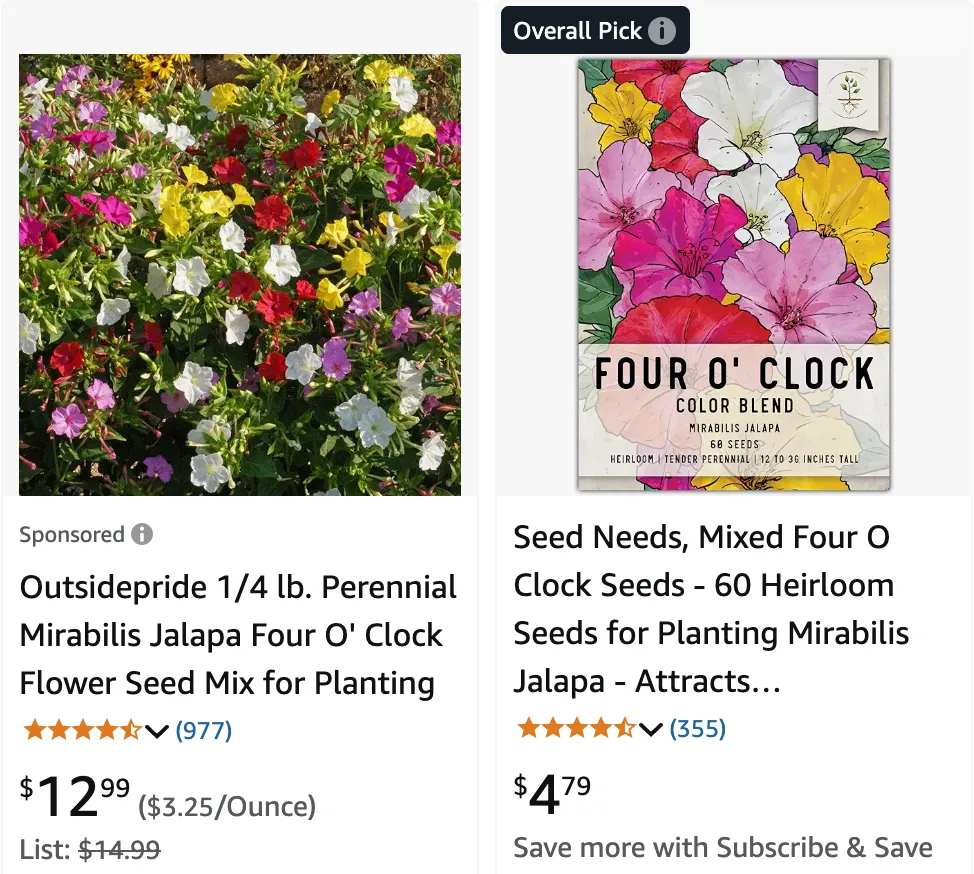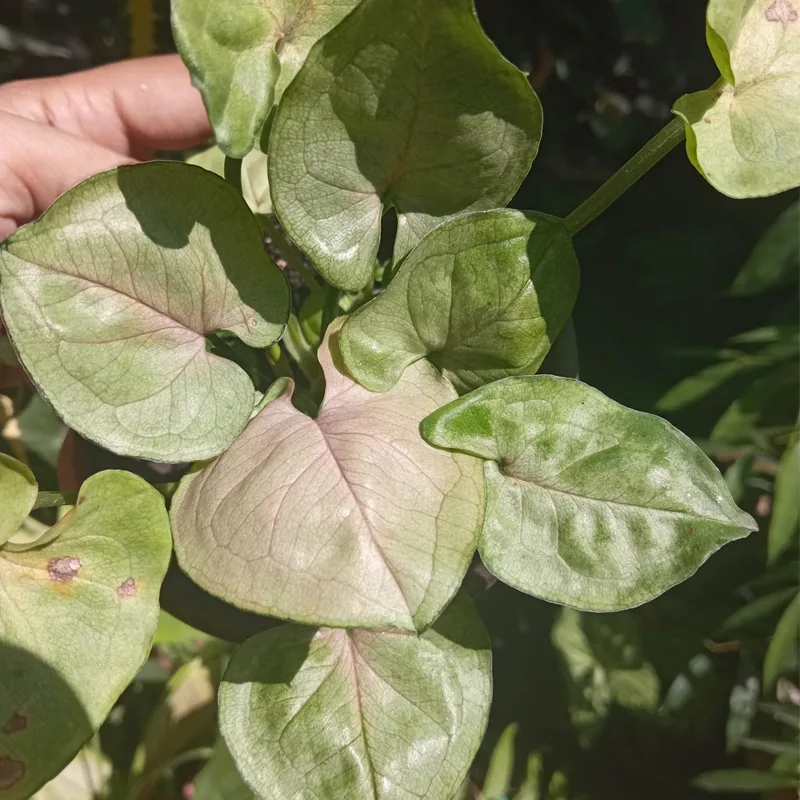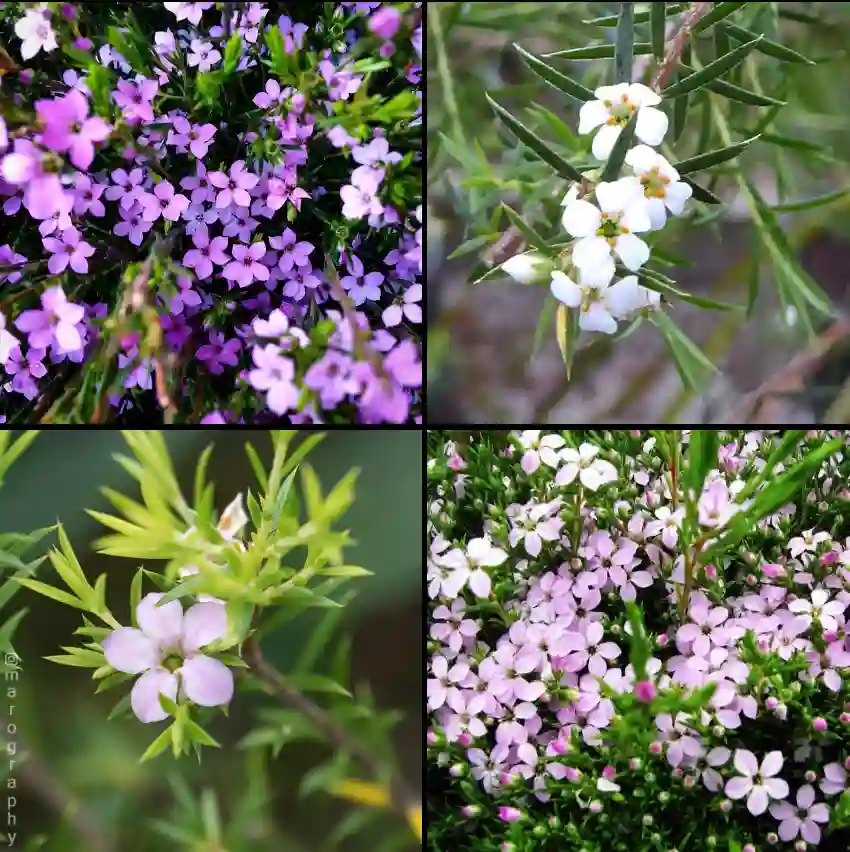
60 Species in Genus Mirabilis
What is Mirabilis jalapa?
Mirabilis jalapa, commonly known as the “4 o’clock plant,” is a fascinating flowering plant native to South America. It’s named for its unique habit of blooming in the late afternoon and staying open throughout the evening, releasing a sweet fragrance. The plant is grown for its vibrant, trumpet-shaped flowers that come in a variety of colors, including yellow, pink, white, and even bi-colored blooms on the same plant.
Why is Mirabilis jalapa called the 4 o’clock plant?
Mirabilis jalapa earned its nickname, the “4 o’clock plant,” because its flowers typically open in the late afternoon around 4 PM and remain open until the following morning. This behavior is influenced by temperature and humidity levels. The plant’s nocturnal flowering schedule is an adaptation to attract night-pollinating moths.
How to grow Mirabilis jalapa?
Growing Mirabilis jalapa is quite simple. It thrives in full sun to partial shade and prefers well-draining soil. You can start it from seeds or tubers. Plant seeds about half an inch deep in spring after the last frost or bury tubers a few inches underground. Water the plant regularly, but avoid overwatering, and it will reward you with a stunning display of blooms.
How to care for Mirabilis jalapa?
To care for Mirabilis jalapa, ensure it gets plenty of sunlight, as this promotes more vigorous flowering. Water it moderately, allowing the soil to dry slightly between waterings. Deadheading spent flowers can encourage further blooms. Additionally, it’s a low-maintenance plant that rarely needs fertilizer, but a light application of a balanced fertilizer in spring can boost its growth.
How to propagate Mirabilis jalapa?
You can propagate Mirabilis jalapa either by seeds or tubers. Collect seeds from dried flowers and plant them in spring. Alternatively, dig up tubers in the fall, store them in a cool, dry place during winter, and replant them in spring. Both methods are effective, but tuber propagation often results in quicker growth.
Can you grow Mirabilis jalapa indoors?
Yes, you can grow Mirabilis jalapa indoors as long as it receives enough light. Place it near a sunny window or under grow lights to mimic full sun conditions. Ensure the pot has good drainage to prevent waterlogging, and remember that indoor plants might not bloom as profusely as outdoor ones.
Is Mirabilis jalapa poisonous?
Yes, parts of Mirabilis jalapa are considered toxic if ingested. The seeds and roots contain compounds that can cause mild gastrointestinal discomfort in humans and pets. It’s best to keep the plant out of reach of children and animals to avoid accidental ingestion.
What are the benefits of growing Mirabilis jalapa?
Mirabilis jalapa offers several benefits, including its ornamental value and ease of care. The plant’s fragrant flowers attract pollinators like moths and butterflies, enhancing your garden’s biodiversity. Its colorful blooms brighten up any landscape, and it can also be used as a natural hedge or border plant.
What are common problems with Mirabilis jalapa?
Mirabilis jalapa is generally hardy, but it can occasionally face issues like powdery mildew, rust, or aphid infestations. Overwatering can also lead to root rot. To prevent these problems, ensure proper air circulation around the plant, avoid wetting the foliage when watering, and inspect it regularly for pests.
What can you plant with Mirabilis jalapa?
Mirabilis jalapa pairs well with other sun-loving plants like marigolds, zinnias, and lantanas. These companions complement its colorful blooms and share similar care requirements. Avoid planting it near plants that prefer consistently moist soil, as Mirabilis jalapa thrives in slightly drier conditions.
How does Mirabilis jalapa compare to similar plants?
Mirabilis jalapa is often confused with other flowering plants like petunias or hibiscus due to its vibrant blooms. However, unlike petunias, its flowers open in the evening rather than during the day. Compared to hibiscus, Mirabilis jalapa is easier to grow and more drought-tolerant, making it an excellent choice for gardeners seeking low-maintenance beauty.
If i die, water my plants!



